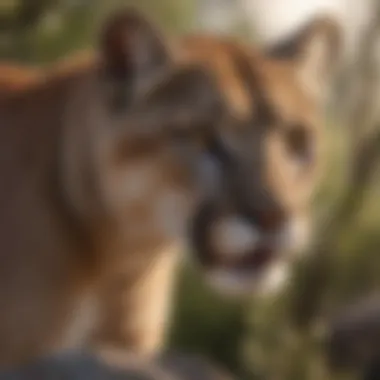Mountain Lion Conservation: Threats and Strategies


Nature Topic Overview
Mountain lions, also known as cougars or pumas, are native to the Americas. These large cats play a crucial role in their ecosystems. They are top predators, which means they help maintain the balance of the animal populations in their habitats. However, their status as an endangered species raises urgent concerns about their future.
The decline of mountain lion populations can be attributed to several factors. Habitat loss, caused by urban development and agriculture, is one of the significant threats. As humans expand into lion territories, prey species, particularly deer, become less abundant. This imbalance can cause mountain lions to venture into populated areas, leading to conflicts with humans.


Conservation efforts are essential to ensure the survival of mountain lions. These efforts aim to restore habitats, create wildlife corridors, and engage communities in protecting these animals. Understanding the importance of mountain lions in nature can foster a sense of responsibility toward wildlife conservation. Awareness and education are key to sustaining their populations for future generations.
Fun Facts and Trivia
- Mountain lions can jump over 15 feet in a single leap.
- They are the most widely distributed large wild cat in the Americas.
- A mountain lion’s territory can range from 30 to over 100 square miles.


These facts not only fascinate children but also help them appreciate the strength and skill of these magnificent animals.
Wildlife Explorations
Mountain lions share their habitat with many other fascinating creatures. Deers, elk, and smaller mammals are common prey. Understanding these relationships provides insights into the ecosystem they inhabit. Other animals in the area that students may find interesting include:


- Bobcats - smaller relatives of mountain lions.
- Black bears - another top predator that coexists in some mountain lion territories.
- Various birds, such as eagles and vultures, which may depend on the same ecosystems for food.
Interactive elements like quizzes can enhance learning. Here’s a simple quiz idea:
What is the main prey for mountain lions?
- Squirrels
- Deer
- Rabbits
Correct Answer: 2. Deer







